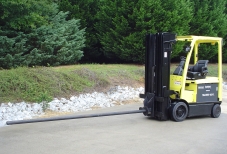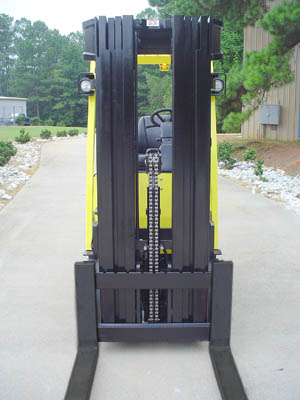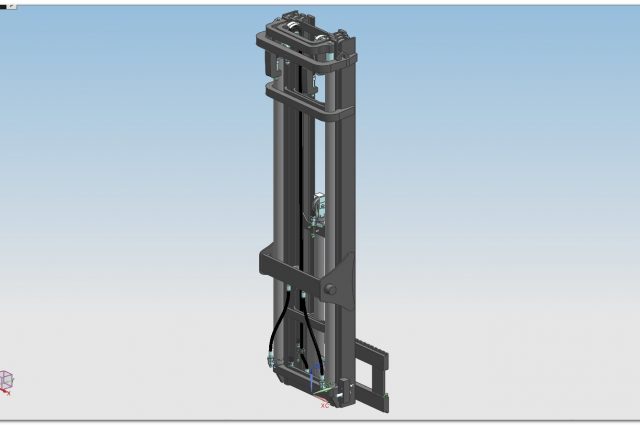

The telehandler is used during construction of the building, and the forklift is used after the fact. Typically, telehandlers are used on construction job sites, whereas vertical-mast type forklifts would be used inside and outside of a building post-construction.

Telehandlers pick, place and carry.Īnother way to think about it is the end-use application. Forklifts are used for picking and carrying material: Picking it up, setting it somewhere else. The difference is telehandlers reach higher and extend further out (it is important to note that these machines have a wide variety of capacities and lift heights). Both types of equipment lift comparable amounts of weight, have similar footprints and turning radii and can use attachments, but only telehandlers have a telescoping boom that reaches up and out or up and over obstacles. Like the name implies, vertical mast forklifts only lift up vertically. The primary difference between a telehandler and the Class VII vertical mast-type forklift is the telehandler’s ability to lift up and over an obstacle. The forklift type sometimes compared to, or confused, with a telehandler is the rough terrain, vertical mast-type forklift. In other words, these machines can be used outdoors or in a combined indoor/outdoor environment.

The equipment within Class VII differs from that in Classes I-VI because the focus in Class VII is on rough terrain.

Telehandlers fall into Class VII, aka “rough terrain forklift trucks.” Classes I through VI are variations of powered industrial trucks, or ITs, and are generally used indoors. Class VII: Rough terrain forklift trucks.Class VI: Electric and internal combustion engine tractors.Class V: Internal combustion engine trucks (pneumatic tires).Class IV: Internal combustion engine trucks (solid/cushion tires).Class III: Electric motor hand trucks or hand/rider trucks.Class II: Electric motor narrow aisle trucks.According to the agency, there are seven classes of forklifts: Department of Labor’s Occupational Safety & Health Administration (OSHA), telehandlers are forklifts. Part of the confusion arises because of the nomenclature used by the U.S. Others would be puzzled that you’d associate a telehandler - typically used on a construction job site - with a forklift, which they picture buzzing around the inside of a warehouse or distribution center. Often, the names used for equipment end up in “you say tomato, I say tomahto” territory.įor example, workers in some industries might use the terms “telehandler” and “forklift” interchangeably, even though they are two different categories of equipment that serve a few of the same functions.


 0 kommentar(er)
0 kommentar(er)
